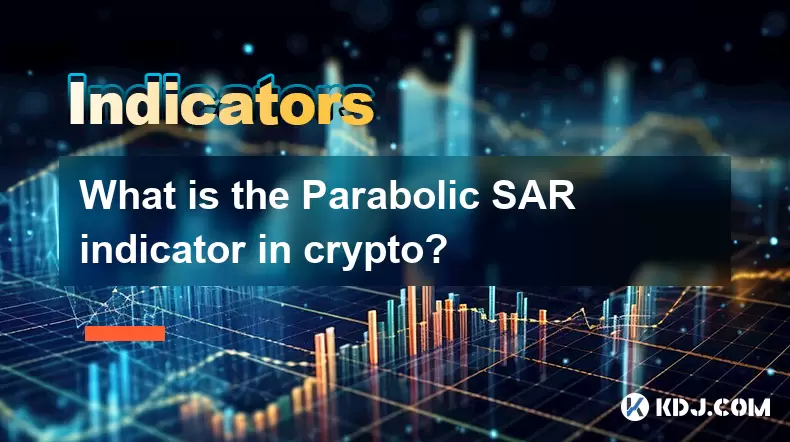-
 Bitcoin
Bitcoin $117,949.0176
0.77% -
 Ethereum
Ethereum $3,143.8503
5.85% -
 XRP
XRP $2.9255
2.03% -
 Tether USDt
Tether USDt $1.0000
-0.01% -
 BNB
BNB $689.0236
1.11% -
 Solana
Solana $163.3524
2.09% -
 USDC
USDC $0.9999
-0.01% -
 Dogecoin
Dogecoin $0.1984
3.58% -
 TRON
TRON $0.3009
0.32% -
 Cardano
Cardano $0.7433
2.52% -
 Hyperliquid
Hyperliquid $47.5538
-0.91% -
 Stellar
Stellar $0.4607
2.37% -
 Sui
Sui $4.0009
3.44% -
 Chainlink
Chainlink $16.0734
4.54% -
 Hedera
Hedera $0.2338
-0.44% -
 Bitcoin Cash
Bitcoin Cash $497.6300
1.10% -
 Avalanche
Avalanche $21.9301
5.61% -
 UNUS SED LEO
UNUS SED LEO $8.8476
-1.77% -
 Shiba Inu
Shiba Inu $0.0...01363
5.22% -
 Toncoin
Toncoin $3.0956
3.08% -
 Litecoin
Litecoin $95.9863
3.76% -
 Polkadot
Polkadot $4.0746
5.35% -
 Monero
Monero $335.3704
-1.17% -
 Uniswap
Uniswap $9.2284
3.49% -
 Dai
Dai $1.0002
0.02% -
 Bitget Token
Bitget Token $4.5845
5.04% -
 Pepe
Pepe $0.0...01270
5.96% -
 Ethena USDe
Ethena USDe $1.0005
-0.01% -
 Aave
Aave $329.3693
5.71% -
 Bittensor
Bittensor $438.6437
4.80%
What is the Parabolic SAR indicator in crypto?
The Parabolic SAR helps crypto traders spot trend reversals with its dynamic dots above or below price, acting as both a stop-loss tool and reversal signal.
Jul 14, 2025 at 07:29 pm

Understanding the Basics of the Parabolic SAR Indicator
The Parabolic SAR (Stop and Reverse) is a technical analysis tool commonly used in cryptocurrency trading to identify potential reversals in price movement. Developed by J. Welles Wilder, this indicator is particularly useful for traders who are looking to determine when an asset might change direction. It appears on charts as a series of dots either above or below the price bars.
When the Parabolic SAR is positioned below the price, it signals a bullish trend, suggesting that traders may consider going long. Conversely, when the dots appear above the price, it indicates a bearish trend, prompting traders to consider shorting or exiting long positions. This visual representation makes it easy to interpret, especially for novice traders navigating the volatile crypto markets.
How the Parabolic SAR Works in Crypto Trading
In the context of cryptocurrencies like Bitcoin or Ethereum, the Parabolic SAR helps traders anticipate where the price might reverse based on historical patterns. The formula behind the indicator dynamically adjusts the SAR value depending on the acceleration factor and the extreme point (EP) of the trend.
- Each time a new high (in an uptrend) or low (in a downtrend) is reached, the extreme point is updated.
- The acceleration factor (AF) typically starts at 0.02 and increases by 0.02 each time a new EP is recorded, up to a maximum of 0.20.
- As the AF increases, the SAR converges more quickly toward the price, making the reversal signal stronger.
This mechanism allows the Parabolic SAR to act as both a trailing stop and a reversal indicator, which is especially valuable in fast-moving crypto markets where timing is crucial.
Using the Parabolic SAR with Other Indicators
While the Parabolic SAR can be powerful on its own, combining it with other indicators often yields better results. For instance, pairing it with the Relative Strength Index (RSI) or Moving Average Convergence Divergence (MACD) can help filter false signals and confirm trend strength.
- When the Parabolic SAR suggests a reversal, checking if RSI levels are overbought (>70) or oversold (<30) can validate the signal.
- Similarly, aligning SAR dots with MACD crossovers can provide higher probability trade setups.
These combinations are essential because the Parabolic SAR tends to generate whipsaws during sideways or ranging markets. Using additional tools ensures that traders don't act on misleading data and avoid unnecessary losses.
Setting Up the Parabolic SAR on Crypto Trading Platforms
Most modern trading platforms like Binance, TradingView, and KuCoin support the Parabolic SAR indicator out of the box. Here's how you can enable and customize it:
- Open your preferred charting platform and select the cryptocurrency pair you want to analyze.
- Click on the indicators menu and search for “Parabolic SAR.”
- Adjust the default settings—usually starting AF = 0.02 and max AF = 0.20—to suit your trading style.
- Apply the indicator and observe how the dots interact with the price candles.
Some advanced users tweak the acceleration factor to make the indicator more sensitive or less reactive. Experimentation is key to finding what works best with your strategy and the specific volatility profile of the crypto asset you're analyzing.
Practical Applications: How Traders Use Parabolic SAR in Real Scenarios
In real-world crypto trading, the Parabolic SAR is primarily used for two purposes: identifying entry points and managing exits.
For example:
- If the Parabolic SAR flips from above to below the price, it could indicate the start of an uptrend. Traders might enter a long position once the dot moves beneath the candlestick.
- On the flip side, when the dots move above the price after a sustained rally, it may signal an impending downtrend, prompting traders to close long positions or initiate shorts.
Additionally, many traders use the SAR as a dynamic stop-loss level. As the trend progresses, the SAR value trails the price, allowing traders to lock in profits without setting fixed stop-loss points that might get triggered prematurely.
Frequently Asked Questions About the Parabolic SAR Indicator
What does SAR stand for in Parabolic SAR?
SAR stands for Stop and Reverse, which reflects the function of the indicator—it helps traders identify when to stop one trade and reverse into another.
Can the Parabolic SAR be used for all cryptocurrencies?
Yes, the Parabolic SAR is applicable to any tradable asset, including all major and minor cryptocurrencies. However, its effectiveness may vary depending on the market’s volatility and liquidity.
Why does the Parabolic SAR sometimes give false signals?
The Parabolic SAR performs best in trending markets but can produce misleading signals in choppy or sideways conditions. That's why it's recommended to use it alongside other indicators to confirm trends.
Is the Parabolic SAR suitable for day trading crypto?
Absolutely. Many day traders use the Parabolic SAR due to its responsiveness and clear visual cues. However, fine-tuning the acceleration factor and using it with volume indicators can enhance its reliability during intraday trading sessions.
Disclaimer:info@kdj.com
The information provided is not trading advice. kdj.com does not assume any responsibility for any investments made based on the information provided in this article. Cryptocurrencies are highly volatile and it is highly recommended that you invest with caution after thorough research!
If you believe that the content used on this website infringes your copyright, please contact us immediately (info@kdj.com) and we will delete it promptly.
- Bitcoin's Bullish Run: Demand Surges, Correction Unlikely?
- 2025-07-16 12:30:12
- MetYa, Conflux Network, and SocialFi: Building the Future of Web3
- 2025-07-16 12:30:12
- Cantor Fitzgerald, Bitcoin, and SPAC Acquisitions: A New York Perspective
- 2025-07-16 10:30:12
- PoL v2 and BeraChain: Building a Stronger Blockchain Ecosystem
- 2025-07-16 10:30:12
- Bitcoin, Social Media, and FOMO: A New Yorker's Take on the Crypto Craze
- 2025-07-16 10:50:12
- GameStop, Bitcoin, and the Inflation Hedge: A New York Perspective
- 2025-07-16 08:30:12
Related knowledge

Advanced RSI strategies for crypto
Jul 13,2025 at 11:01am
Understanding the Basics of RSI in Cryptocurrency TradingThe Relative Strength Index (RSI) is a momentum oscillator used to measure the speed and chan...

Crypto RSI for day trading
Jul 12,2025 at 11:14am
Understanding RSI in the Context of Cryptocurrency TradingThe Relative Strength Index (RSI) is a momentum oscillator used to measure the speed and cha...

Crypto RSI for scalping
Jul 12,2025 at 11:00pm
Understanding RSI in the Context of Crypto TradingThe Relative Strength Index (RSI) is a momentum oscillator widely used by traders to measure the spe...

What does an RSI of 30 mean in crypto
Jul 15,2025 at 07:07pm
Understanding RSI in Cryptocurrency TradingRelative Strength Index (RSI) is a momentum oscillator widely used in cryptocurrency trading to measure the...

What does an RSI of 70 mean in crypto
Jul 13,2025 at 06:07pm
Understanding the RSI Indicator in Cryptocurrency TradingThe Relative Strength Index (RSI) is a widely used technical analysis tool that helps traders...

Does RSI work in a bear market for crypto
Jul 16,2025 at 01:36pm
Understanding RSI in Cryptocurrency TradingThe Relative Strength Index (RSI) is a momentum oscillator used by traders to measure the speed and change ...

Advanced RSI strategies for crypto
Jul 13,2025 at 11:01am
Understanding the Basics of RSI in Cryptocurrency TradingThe Relative Strength Index (RSI) is a momentum oscillator used to measure the speed and chan...

Crypto RSI for day trading
Jul 12,2025 at 11:14am
Understanding RSI in the Context of Cryptocurrency TradingThe Relative Strength Index (RSI) is a momentum oscillator used to measure the speed and cha...

Crypto RSI for scalping
Jul 12,2025 at 11:00pm
Understanding RSI in the Context of Crypto TradingThe Relative Strength Index (RSI) is a momentum oscillator widely used by traders to measure the spe...

What does an RSI of 30 mean in crypto
Jul 15,2025 at 07:07pm
Understanding RSI in Cryptocurrency TradingRelative Strength Index (RSI) is a momentum oscillator widely used in cryptocurrency trading to measure the...

What does an RSI of 70 mean in crypto
Jul 13,2025 at 06:07pm
Understanding the RSI Indicator in Cryptocurrency TradingThe Relative Strength Index (RSI) is a widely used technical analysis tool that helps traders...

Does RSI work in a bear market for crypto
Jul 16,2025 at 01:36pm
Understanding RSI in Cryptocurrency TradingThe Relative Strength Index (RSI) is a momentum oscillator used by traders to measure the speed and change ...
See all articles

























































































